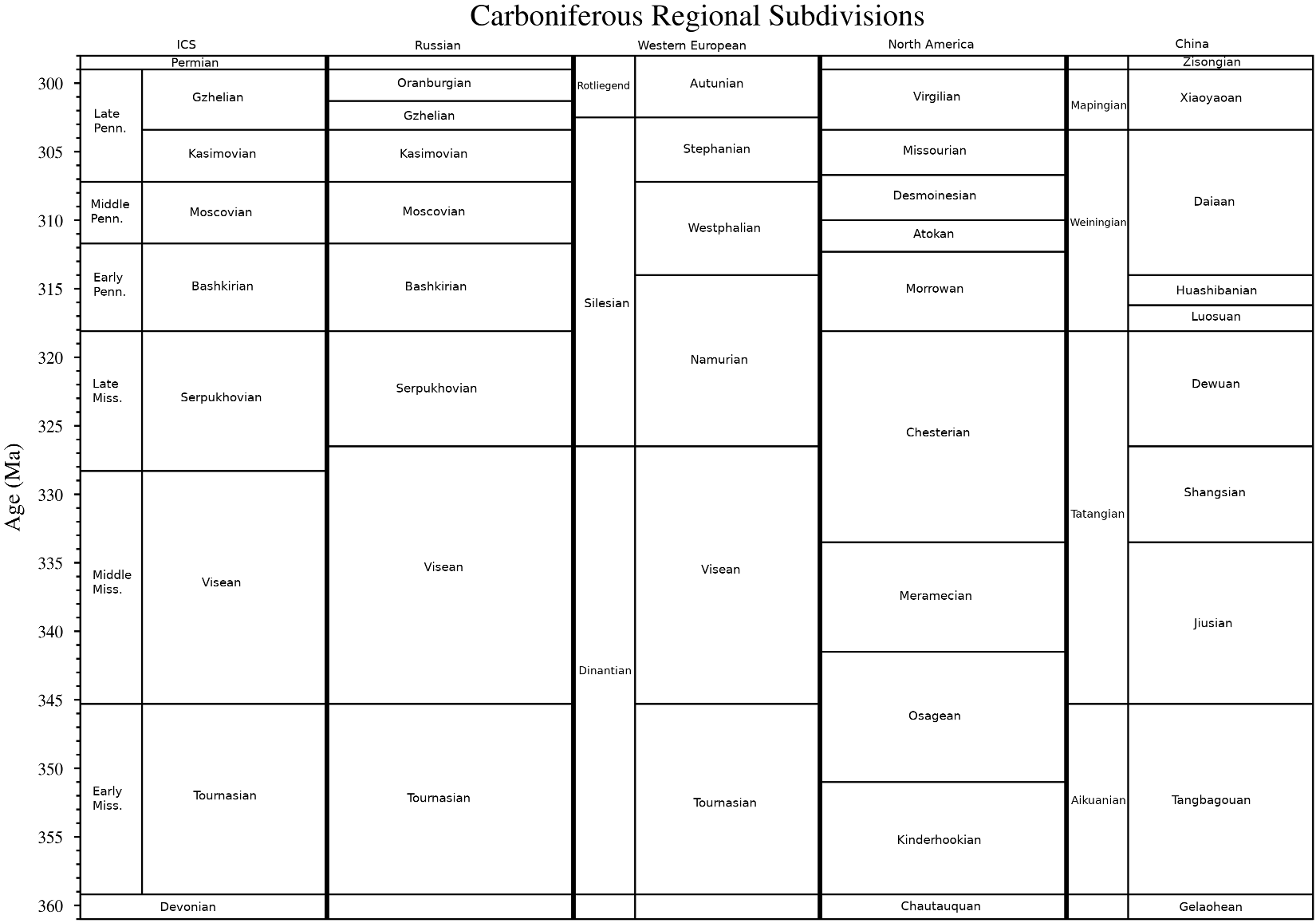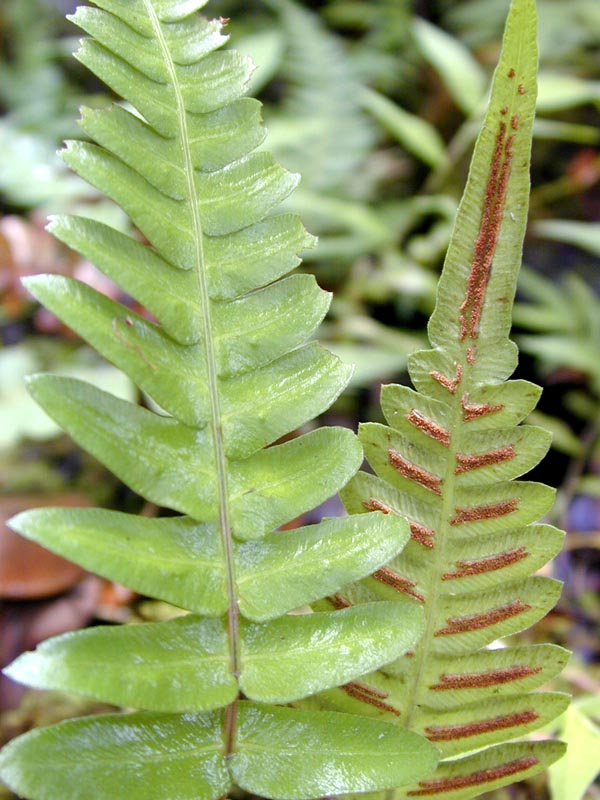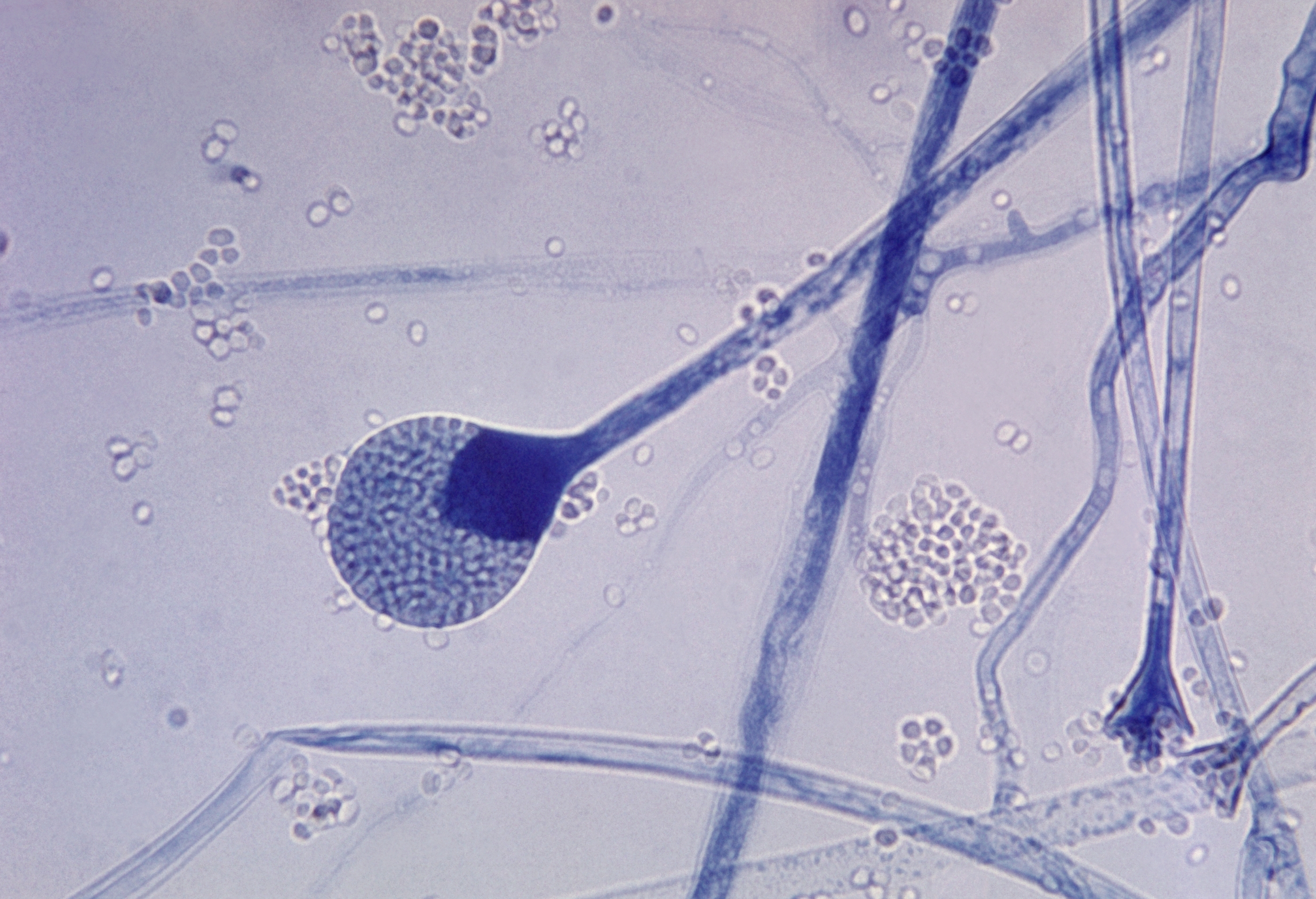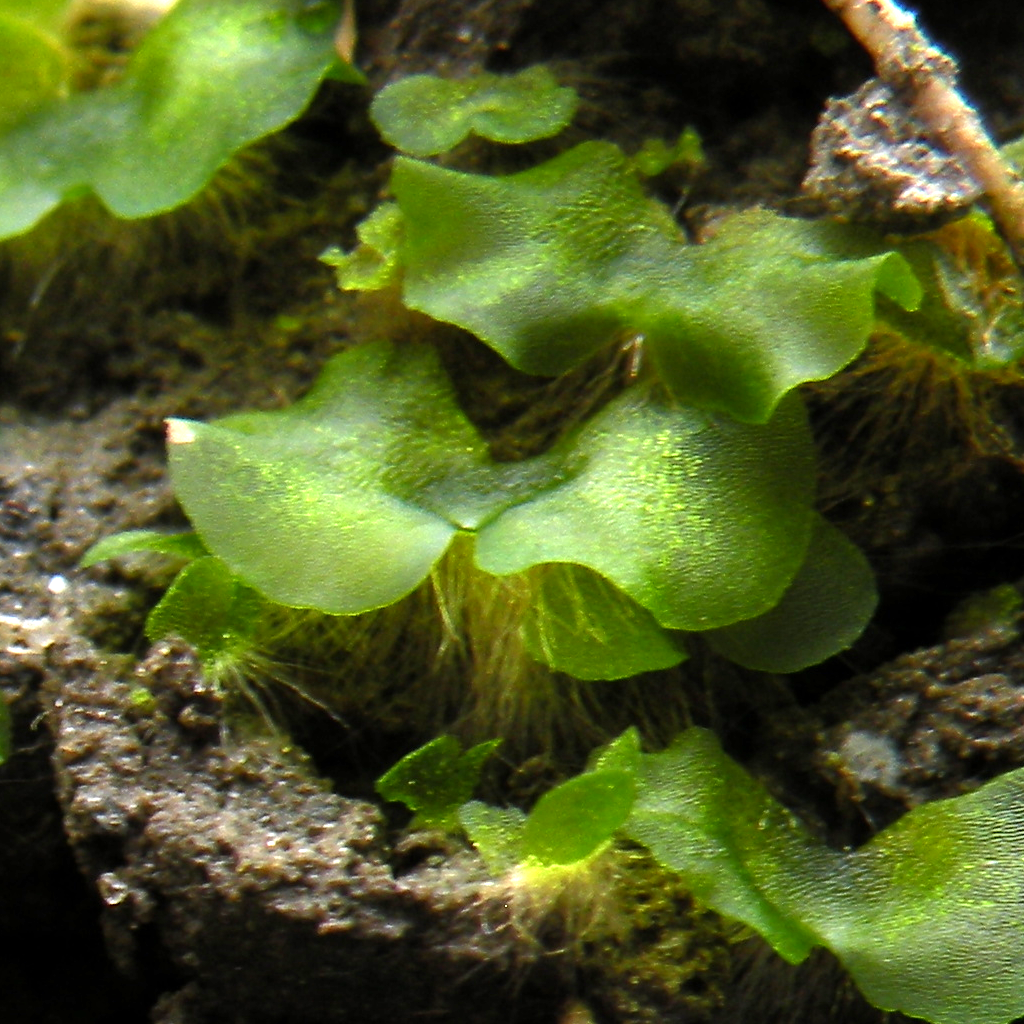|
Asterotheca
''Asterotheca'' is a genus of seedless, spore-bearing, vascularized ferns dating from the Carboniferous of the Paleozoic to the Triassic of the Mesozoic. Description ''Asterotheca sp.'' is a vascularized, seedless fern that reproduces via spores that require the presence of water. This genus of fern lived from the Carboniferous to the Triassic and is an ancestor to all modern seed plants. The leaves of ''Asterotheca'' (and all ferns) are called fronds. Fossilized specimens show large, morphologically complex structures that consist of leaf segments called pinnae. Each pinna consists of four to eight sporangia. ''Asterotheca'' fronds are unipinnate because there is only a single row of pinnae on each side of the rachis, or main central stem. ''Asterotheca cyathea'' displays open dichotomous unipinnate segments, each with four to five eusporangia. Synonyms In the field of paleobotany, different parts of plant fossils are assigned different taxonomic names based on how ... [...More Info...] [...Related Items...] OR: [Wikipedia] [Google] [Baidu] |
Marattiales
Marattiaceae is the only family of extant (living) ferns in the order Marattiales. In the Pteridophyte Phylogeny Group classification of 2016 (PPG I), Marattiales is the only order in the subclass Marattiidae. The family has six genera and about 110 species. Many are different in appearance from other ferns, having large fronds and fleshy rootstocks. Description The Marattiaceae diverged from other ferns very early in their evolutionary history and are quite different from many plants familiar to people in temperate zones. Many of them have massive, fleshy rootstocks and the largest known fronds of any fern. The Marattiaceae is one of two groups of ferns traditionally known as eusporangiate ferns, meaning that the sporangium is formed from a group of cells as opposed to a leptosporangium in which there is a single initial cell. The large fronds characteristic of the group are most readily found in the genus ''Angiopteris'', native to Australasia, Madagascar and Oceania. These f ... [...More Info...] [...Related Items...] OR: [Wikipedia] [Google] [Baidu] |
Psaronius Reconstruction
''Psaronius'' was a Marattialean tree fern which grew to 10m in height, and is associated with leaves of the organ genus '' Pecopteris'' and other extinct tree ferns. Originally, ''Psaronius'' was a name for the petrified stems, but today the genus is used for the entire tree fern. ''Psaronius'' tree fern fossils are found from the Carboniferous through the Permian. Etymology The word Psaronius comes from the Greek ψαρονιος (''psaronius'', precious stone) the root of which is ψαρον (''psaron'', a starling bird.] The stone was used for ornamental purposes in Europe and acquired the name for its resemblance to the speckled pattern of the starling. In Germany, the stone was called staarstein. And in English, it was called either starry-stone or starling stone. Description Like many extinct trees, psaronius is known by various individual fossil parts that are not always found together. The main parts include: the root mantle, the stem, the fronds, the coziers ( ... [...More Info...] [...Related Items...] OR: [Wikipedia] [Google] [Baidu] |
Carboniferous
The Carboniferous ( ) is a geologic period and system of the Paleozoic that spans 60 million years from the end of the Devonian Period million years ago (Mya), to the beginning of the Permian Period, million years ago. The name ''Carboniferous'' means "coal-bearing", from the Latin '' carbō'' (" coal") and '' ferō'' ("bear, carry"), and refers to the many coal beds formed globally during that time. The first of the modern 'system' names, it was coined by geologists William Conybeare and William Phillips in 1822, based on a study of the British rock succession. The Carboniferous is often treated in North America as two geological periods, the earlier Mississippian and the later Pennsylvanian. Terrestrial animal life was well established by the Carboniferous Period. Tetrapods (four limbed vertebrates), which had originated from lobe-finned fish during the preceding Devonian, became pentadactylous in and diversified during the Carboniferous, including early amphibian lin ... [...More Info...] [...Related Items...] OR: [Wikipedia] [Google] [Baidu] |
Pinnation
Pinnation (also called pennation) is the arrangement of feather-like or multi-divided features arising from both sides of a common axis. Pinnation occurs in biological morphology, in crystals, such as some forms of ice or metal crystals, and in patterns of erosion or stream beds. The term derives from the Latin word ''pinna'' meaning "feather", "wing", or " fin". A similar concept is "pectination," which is a comb-like arrangement of parts (arising from one side of an axis only). Pinnation is commonly referred to in contrast to "palmation," in which the parts or structures radiate out from a common point. The terms "pinnation" and "pennation" are cognate, and although they are sometimes used distinctly, there is no consistent difference in the meaning or usage of the two words.Jackson, Benjamin, Daydon; A Glossary of Botanic Terms with their Derivation and Accent; Published by Gerald Duckworth & Co. London, 4th ed 1928 Plants Botanically, pinnation is an arrangement of ... [...More Info...] [...Related Items...] OR: [Wikipedia] [Google] [Baidu] |
Mitosis
In cell biology, mitosis () is a part of the cell cycle in which replicated chromosomes are separated into two new nuclei. Cell division by mitosis gives rise to genetically identical cells in which the total number of chromosomes is maintained. Therefore, mitosis is also known as equational division. In general, mitosis is preceded by S phase of interphase (during which DNA replication occurs) and is often followed by telophase and cytokinesis; which divides the cytoplasm, organelles and cell membrane of one cell into two new cells containing roughly equal shares of these cellular components. The different stages of mitosis altogether define the mitotic (M) phase of an animal cell cycle—the division of the mother cell into two daughter cells genetically identical to each other. The process of mitosis is divided into stages corresponding to the completion of one set of activities and the start of the next. These stages are preprophase (specific to plant cells), p ... [...More Info...] [...Related Items...] OR: [Wikipedia] [Google] [Baidu] |
Haploid
Ploidy () is the number of complete sets of chromosomes in a cell (biology), cell, and hence the number of possible alleles for Autosome, autosomal and Pseudoautosomal region, pseudoautosomal genes. Sets of chromosomes refer to the number of maternal and paternal chromosome copies, respectively, in each homologous chromosome pair, which chromosomes naturally exist as. Somatic cells, Tissue (biology), tissues, and Individual#Biology, individual organisms can be described according to the number of sets of chromosomes present (the "ploidy level"): monoploid (1 set), diploid (2 sets), triploid (3 sets), tetraploid (4 sets), pentaploid (5 sets), hexaploid (6 sets), heptaploid or septaploid (7 sets), etc. The generic term polyploidy, polyploid is often used to describe cells with three or more chromosome sets. Virtually all sexual reproduction, sexually reproducing organisms are made up of somatic cells that are diploid or greater, but ploidy level may vary widely between different or ... [...More Info...] [...Related Items...] OR: [Wikipedia] [Google] [Baidu] |
Alternation Of Generations
Alternation of generations (also known as metagenesis or heterogenesis) is the predominant type of life cycle in plants and algae. It consists of a multicellular haploid sexual phase, the gametophyte, which has a single set of chromosomes alternating with a multicellular diploid asexual phase, the sporophyte which has two sets of chromosomes. A mature sporophyte produces haploid spores by meiosis, a process which reduces the number of chromosomes to half, from two sets to one. The resulting haploid spores germinate and grow into multicellular haploid gametophytes. At maturity, a gametophyte produces gametes by mitosis, the normal process of cell division in eukaryotes, which maintains the original number of chromosomes. Two haploid gametes (originating from different organisms of the same species or from the same organism) fertilisation, fuse to produce a diploid zygote, which divides repeatedly by mitosis, developing into a multicellular diploid sporophyte. This cycle, f ... [...More Info...] [...Related Items...] OR: [Wikipedia] [Google] [Baidu] |
Synangium
A sporangium (; from Late Latin, ) is an enclosure in which spores are formed. It can be composed of a single cell or can be multicellular. Virtually all plants, fungi, and many other lineages form sporangia at some point in their life cycle. Sporangia can produce spores by mitosis, but in nearly all land plants and many fungi, sporangia are the site of meiosis and produce genetically distinct haploid spores. Fungi In some phyla of fungi, the sporangium plays a role in asexual reproduction, and may play an indirect role in sexual reproduction. The sporangium forms on the sporangiophore and contains haploid nuclei and cytoplasm. Spores are formed in the sporangiophore by encasing each haploid nucleus and cytoplasm in a tough outer membrane. During asexual reproduction, these spores are dispersed via wind and germinate into haploid hyphae. Although sexual reproduction in fungi varies between phyla, for some fungi the sporangium plays an indirect role in sexual reproducti ... [...More Info...] [...Related Items...] OR: [Wikipedia] [Google] [Baidu] |
Leptosporangiate Fern
The Polypodiidae, commonly called leptosporangiate ferns, formerly Leptosporangiatae, are one of four subclasses of ferns, and the largest of these, being the largest group of living ferns, including some 11,000 species worldwide. The group has also been treated as the class Pteridopsida or Polypodiopsida, although other classifications assign them a different rank. Older names for the group include Filicidae and Filicales, although at least the "water ferns" (now the Salviniales) were then treated separately. The leptosporangiate ferns are one of the four major groups of ferns, with the other three being the eusporangiate ferns comprising the marattioid ferns (Marattiidae, Marattiaceae), the horsetails (Equisetiidae, Equisetaceae), and whisk ferns and moonworts. There are approximately 8465 species of living leptosporangiate ferns, compared with about 2070 for all other ferns, totalling 10535 species of ferns. Almost a third of leptosporangiate fern species are epiphytes. ... [...More Info...] [...Related Items...] OR: [Wikipedia] [Google] [Baidu] |
Eusporangiate Fern
Eusporangiate ferns are vascular spore plants, whose sporangia arise from several epidermal cells and not from a single cell as in leptosporangiate ferns. Typically these ferns have reduced root systems and sporangia that produce large amounts of spores (up to 7000 spores per sporangium in '' Christensenia'') There are four extant eusporangiate fern families, distributed among three classes. Each family is assigned to its own order. *Class Psilotopsida **Order Psilotales, family Psilotaceae – Whisk ferns (2 genera, about 17 species) **Order Ophioglossales, family Ophioglossaceae – Adder's-tongues (5 genera, about 80 species) *Class Equisetopsida **Order Equisetales, family Equisetaceae – Horsetails (1 genus, about 15 species) *Class Marattiopsida **Order Marattiales, family Marattiaceae – Marattoid ferns (6 genera, about 500 species) The following diagram shows a likely phylogenic placement of eusporangiate fern classes within the vascular plants. Cladistic ... [...More Info...] [...Related Items...] OR: [Wikipedia] [Google] [Baidu] |
Gametophyte
A gametophyte () is one of the two alternation of generations, alternating multicellular organism, multicellular phases in the life cycles of plants and algae. It is a haploid multicellular organism that develops from a haploid spore that has one set of chromosomes. The gametophyte is the Sexual reproduction of plants, sexual phase in the life cycle of plants and algae. It develops sex organs that produce gametes, haploid sex cells that participate in fertilization to form a diploid zygote which has a double set of chromosomes. Cell division of the zygote results in a new diploid multicellular organism, the second stage in the life cycle known as the sporophyte. The sporophyte can produce haploid spores by meiosis that on germination produce a new generation of gametophytes. Algae In some multicellular green algae (''Ulva lactuca'' is one example), red algae and brown algae, sporophytes and gametophytes may be externally indistinguishable (isomorphic). In ''Ulva (genus), Ulv ... [...More Info...] [...Related Items...] OR: [Wikipedia] [Google] [Baidu] |






